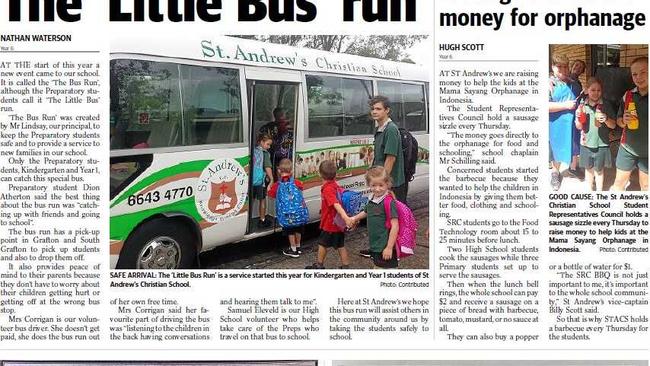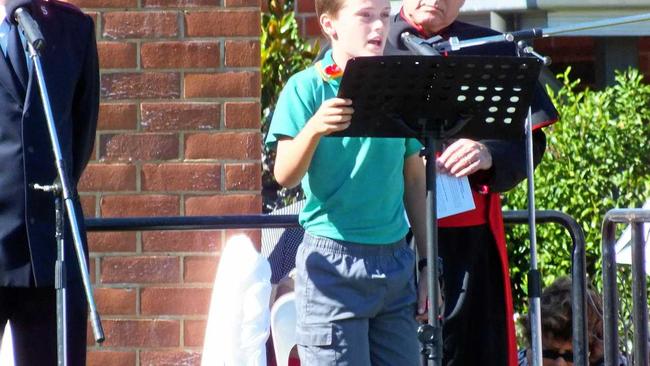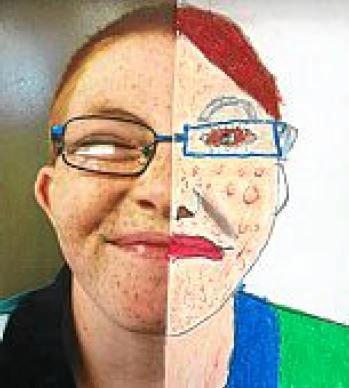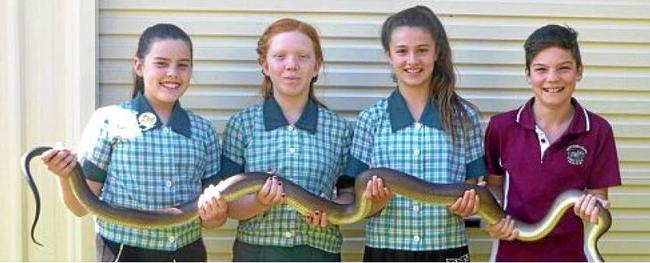DEX Newspaper of the Year: Primary School winners
Winning submission 'STACS' up when it comes to news
Grafton
Don't miss out on the headlines from Grafton. Followed categories will be added to My News.
STACS of Newswas first cab off the rank and first over the line in The Daily Examiner's Newspaper of the Year - Primary School Division.
St Andrew's Christian School's submission, published on March 13, kicked off the 2018 competition and set the standard high.
It wasn't ground-breaking journalism or above average writing skills that made STACS of News stand out from this year's 20 participating primary schools.
Each submission is judged on a criteria that includes the range and relevance of topics reported, student involvement, going above and beyond with additional information, creative ideas such as cartoons and graphs, and sense of enjoyment.
The winning edition, re-published in its entirety below, ticked all those boxes and proved that sometimes less is more.
There were just two articles, but they covered two important topics. The first, The 'Little Bus' run by Nathan Waterson explored a new service which directly benefits the school family, while Sizzling idea to raise money for orphanage by Hugh Scott highlighted how the school helps others abroad.
The other two elements on the page were an advertisement drawn by Amity Stevenson promoting various features of the school, and a cartoon drawn by Levi Wilson-Feeney.

Cowper Public was overall runner-up and its historic feature story Orphanage has tales is published opposite, while South Grafton Public was third.
BEST STORY: St Joeys Times perfects 'science' of story-telling
The level of spelling, grammar, story structure and reader engagement are obviously important elements for selecting the Best Story. However, so too is the emphasis on newsworthy issues that impact the school's community, evidence of research, and use of quotes to enhance the story.
The 2018 winning article Science with a twist, written by Jake, Sharlee, Mysti and Daniel and published in the St Joey's Times, would not look out of place in any newspaper.
Science with a twist
By Jak, Sharlee, Mysti and Daniel, St Joseph's Primary School
STEM - Science, Technology, Engineering and Maths - has taken off at St Joseph's Primary School.
Walk into the Stage 3 classroom during a STEM lesson and you will find students on Google SketchUp, Tinkercad, collaboratively working via Google Classroom or conducting some sort of experiment with controls and variables.
STEM is new to the school this year, with students currently working on a project to come up with ways to reduce noise transferring from one room to another.
Having investigated noise reducing insulation products in the building industry, they are now designing a test to evaluate the most effective sound insulator.
"The children have had to learn a lot of new skills quickly this year," Year 6 teacher Mrs Parkin said.
"How to work in a group, presentation skills, designing fair scientific tests, as well as a lot of new technology."
STEM is an educational journey for both the Stage 3 students and their teachers.
Students work together as a team and share their ideas and skills with others.
During STEM lessons there are often lists of 'classroom experts' on the board, so the teachers aren't always the person students need to go to for help.
RUNNER-UP: Captain's Anzac report
By Jimmy Ford, Westlawn Public School captain
I WAS honoured to be asked to speak at this year's Anzac memorial service. When planning my speech, I took some time to gather my thoughts and ideas about what Anzac Day means to me.
It started with a story I recall my dad telling me a little while ago. It was about his uncle, who was captured by the Japanese and made a prisoner of war in Changi. My uncle's mate had a badly infected foot which was rotting, and my uncle used to run his mate down to a nearby pond, where the fish would eat away at the rotten flesh. I thought that this was a really clever thing to do in adverse circumstances. This action saved my uncle's friend from blood poisoning and ultimately his life.

This story helped me to reflect on the harshness of war for soldiers, especially the daily discomfort, the lack of good food, clean water, hygienic conditions and a warm comfy bed, dirty and ragged clothes, infections and the slavery. I hope that I will never have to experience these appalling conditions.
Another thing I asked myself was, 'What if my brother had to go to war? He is only 14.'
In my research, I came across a story about a 14-year-old boy called Jimmy who went to war.
I imagined the things that must have gone through Jimmy's mind at that time; the excitement of travelling overseas, sadness leaving family, friends and home, and anxiety about what lay ahead, potentially dying overseas and not ever coming back!
These stories were the inspiration for my speech. Anzac Day is about remembering the sacrifices that the Australian and New Zealand men and women made, to fight for our freedom and keep our countries safe and free from conflict and all of the little things that we take for granted. Thanks to them, we live in a fortunate country, the only way of life we know.
It is important that we reflect, understand, and not forget the Anzacs.
HIGHLY COMMENDED: Tucabia talks rubbish
By Marcia, Ellie, Lachlan and Satriya, Tucabia Public School
TUCABIA Public School participated in its annual commitment to Clean Up Australia Day on Friday, March 2. We collected a disappointing large amount of rubbish within just 100m of our school.
We picked up lots of rubbish near the river, destined for our waterways. Surely everyone knows the negative impact of litter, so why does it continue to be an issue?
Most people have seen images of turtles suffocating on plastic bags or birds dying because they are trapped by discarded fishing line.
The Great Pacific Garbage Patch is a region in the North Pacific Ocean where currents gather plastic and other rubbish. It covers an area almost the size of NSW and growing. It is embarrassing we are adding to this disaster every day.
Rubbish we picked up included rotting food, dirty containers, broken glass and rusty metal just waiting to injure people or animals. Do people want everyone to get sick or hurt because they can't be bothered putting their rubbish in the bin?
We picked up the rubbish for free, but it does cost a lot to pick up other people's litter. In 2013, the Environmental Protection Authority said it cost about $350 million a year to deal with litter in Australia. That is almost $1 million a day. That money should be used for schools, hospitals or looking after our old people.
Rubbish is bad for the environment, it costs our country a lot of money and it's dangerous.
Why are people still littering?
BEST PHOTOGRAPH: Valley Hope helps put things in perspective
The Best Photograph typically needs to be eye catching and demonstrates creative use of lighting and framing techniques, but also conveys or enhances the story being told.
This year's winner was a self-portrait from Pacific Valley Christian School student Travis, who is part of the Valley Hope School program.

The runner-up from Chatsworth Island Public School was taken by a teacher, but featured a level of student involvement and fun.

The Daily Examiner thanks all the Clarence Valley schools who participated in the 2018 Newspapers in Education Program (masthead title in brackets): Chatsworth Island Public (Chatty Times), Clarence Valley Anglican School, Coutts Crossing Public (Kids Shine), Cowper Public, Grafton Public, Grafton High, Harwood Island Public (Happenings), Iluka Public (Lines), Maclean High, Maclean Public (Mail), Nymboida Public (News), Pacific Valley Christian School, Palmers Island Public (Press), St James Primary, St Joseph's Primary (St Joey's Times), St Mary's Primary (Spectator), South Grafton High (South Side Scribbler), South Grafton Public, St Andrew's Christian School (STACS of News), Tucabia Public (Tribute), Ulmarra Public (Inside), Westlawn Public (Whispers) and Yamba Public (Times).
Originally published as DEX Newspaper of the Year: Primary School winners


